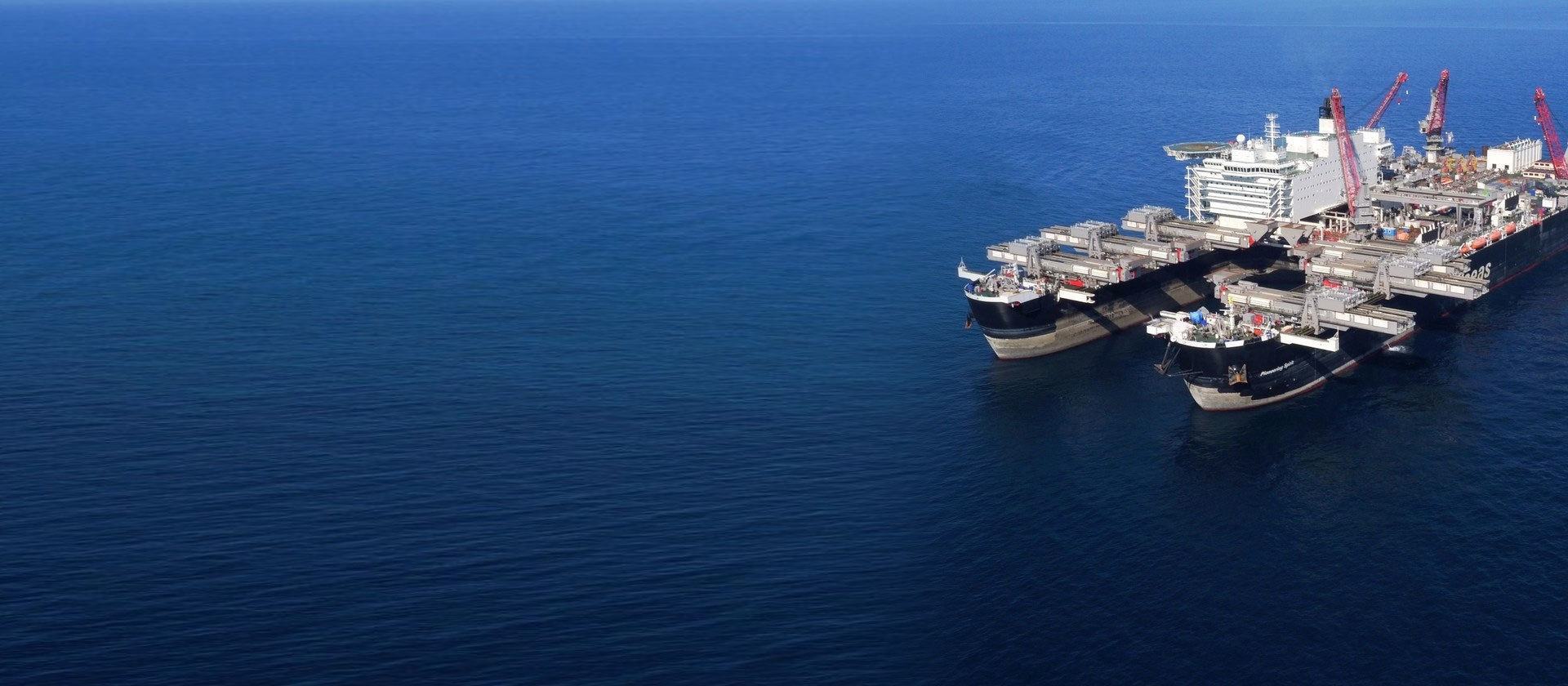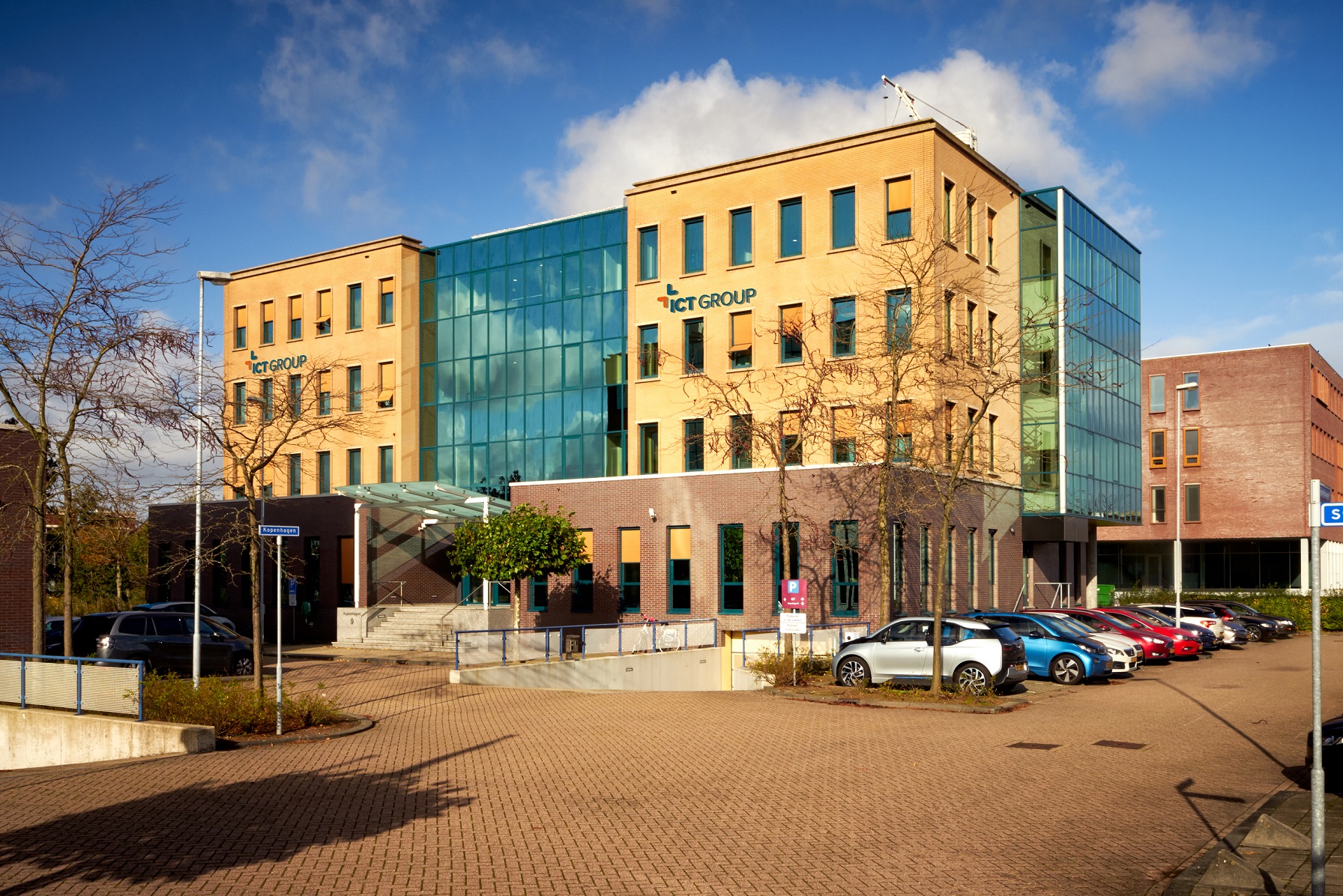
How do you safely lift a gigantic offshore platform with a ship in a single move?
Raster develops an extra safety shield for pioneering spirit
- 5 April 2016
- 3 minutes
The Pioneering Spirit is the world’s largest offshore construction ship, built specifically to lift and remove large offshore platforms in a single move. But how can you ensure the safety of that lift under all kinds of conditions? That was the challenge facing Raster, a company that specialises in industrial process automation, which has been a part of ICT Group since 2015.
Single lift
The Pioneering Spirit is unique. With a total surface equivalent to six football pitches, the offshore ship is the largest of its kind in the world. The lifting system of 16 lifting beams with a lift capacity of 3,000 tonnes each gives the Pioneering Spirit the ability to lift an offshore platform of up to 48,000 tonnes in a single move. This means the vessel provides a more efficient, more environment-friendly and safer alternative for the installation and removal of offshore platforms. These platforms are currently dismantled section by section, with the component parts taken ashore for further disassembly. The Pioneering Spirit can also be deployed to lay record-weight oil and gas pipelines.
Move with the waves
Offshore company Allseas, the owner of the Pioneering Spirit, commissioned the ship specifically for the installation and decommissioning of platforms on choppy seas, like the North Sea. The ship responds to wave movements with the aid of a highly inventive motion compensation system. The 16 lifting beams of the Topsides Lift System (TLS) can each move freely across the deck, so they can compensate by moving as the vessel moves. This enables the ship to lift platforms in a stable and controlled manner.
Overall Safety System
In order to limit the risk of accidents and damage to the ship or platforms, Raster devoted a great deal of attention to the operational safety of the TLS. That safety is guaranteed through the use of various Layers of Protection. All 16 lifting beams have their own redundant control and safety systems. And as an extra layer of protection, the vessel has an Overall Safety System (OSS) that monitors the safety of all 16 beams and intervenes in emergency situations. This OSS was developed and implemented by Raster, a company that specialises in industrial process automation and which has been part of ICT Group since 2015.
Specialist in process safety
Allseas hired Raster because of its expertise in the field of process safety in the oil and gas industry and in heavy lifting. “Raster was already involved in the specifications for the Jacket Lift System, which takes platform legs on its back so to speak,” says Reitse van der Wekken of Allseas. “The fact that we could take the build a step further with Raster was a deciding factor for us. Raster’s short lines of communication and the organisation’s flexibility also played a part in our choosing the company.”
Large ship, large challenges
Raster initially helped Allseas to convince the market of the advantages of the control and safety design of the Topsides Lift System. Allseas subsequently awarded Raster the contract for the implementation of the OSS, to strengthen this design. The huge size of the Pioneering Spirit created considerable challenges for Raster. “The systems are all duplicated, with back-up systems in the various locations on the ship. This took us to the boundaries of both the hardware and software systems,” says Raster technical account manager Claudia van Batenburg. “To give you some idea: we normally have to deal with a number of control and safety systems. In this instance, we are talking about 34 of those and the largest of their kind! We have pushed that to the very limit.”
Smart solutions
The software development for the OSS also took Raster’s ingenuity to the max, van Batenburg says. “All the beams use the identical safety and control software code. So it wasn’t possible to distinguish one from another, even though that is necessary. After all, if the OSS has to intervene on a beam, it has to know which one it is communicating with. We solved this while also maintaining the generic beam programming.” How? “In a smart way,” van Batenburg laughs. “Without disclosing any technical secrets, it boils down to building the identification at a different level in the architecture, while still applying the Safety protocol.”
Lifting record
On 22 August 2016, the Pioneering Spirit removed the 13,500-tonne offshore platform Yme, owned by oil company Repsol, in the Norwegian part of the North Sea. In doing so, Allseas set a new lifting record in the offshore industry. “The TLS worked to everyone’s satisfaction and has now largely proven itself,” Van der Wekken at Allseas concludes. “We have since made a number of improvements, both necessary and potential, during the second test campaign on a self-built test platform in the North Sea. We can now execute future projects even more safely and in a manner even more tailored to the customer’s requirements.” The cooperation between Allseas and Raster can certainly be considered special, according to both parties. Raster director Ethel van Groenestijn: “There was a high level of mutual respect and trust. This is obvious from the fact that Allseas adopted all our recommendations on safety measures. We are very proud of that.” For more information about Raster, click here.
